Mark Sisson's Blog, page 212
August 17, 2016
8 Confidence Building Exercises for Primal Success
 When it comes to going Primal, there’s lots to enjoy. But on the way to success, it’s inevitable we’ll hit some dips in the road. Life intervenes, challenging our newly minted Primal routines. At some point or another, we’re bound to reach a confounding impasse and lose our mojo. When it happens, we’re presented with two choices: take it as an intractable character flaw (not recommended) or take it in stride, recognizing the inherent need for a reboot. Many readers write in for a pick-me-up, a pat on the back and some reassuring words of support to keep them going (keep those coming, since I learn from every person’s experience). So how can we find a confidence foothold to keep climbing on these days? Or, to put it a different way, how can we mentally fortify ourselves when we’re feeling our weakest?
When it comes to going Primal, there’s lots to enjoy. But on the way to success, it’s inevitable we’ll hit some dips in the road. Life intervenes, challenging our newly minted Primal routines. At some point or another, we’re bound to reach a confounding impasse and lose our mojo. When it happens, we’re presented with two choices: take it as an intractable character flaw (not recommended) or take it in stride, recognizing the inherent need for a reboot. Many readers write in for a pick-me-up, a pat on the back and some reassuring words of support to keep them going (keep those coming, since I learn from every person’s experience). So how can we find a confidence foothold to keep climbing on these days? Or, to put it a different way, how can we mentally fortify ourselves when we’re feeling our weakest?
First off, I don’t want to trivialize confidence or treat it like some kind of emotional accessory. Confidence, as most of us understand it, is more of a complex psychological experience than a one-dimensional feeling. It’s not something you either have or don’t, and the nature of it can vary for different people. Some people (for a host of reasons) might have an easier time feeling it than others. Yet it matters for all of us. True confidence is more substantive than bravado. It can be a centered comfort with oneself, a relative perception of self-efficacy, a grounded sense of self-reference, or all of the above.
Suffice it to say though, a lack of confidence can naturally present a big obstacle when you’re trying to overhaul your diet and lifestyle or take up new fitness challenges. No matter what your specific goal, a healthy dose of self-confidence is pretty key to getting the job done. For the days when it feels like the motivational well is dry, let’s look at some ways we can shore up our store of confidence.
1. Suit up for the part
I can’t tell you how many people I’ve seen who wait to buy the things they want and need to get healthy until they “prove” to themselves that the investment won’t be wasted. They consider this a reasonable, even prudent approach. I say more often than not that it’s a confidence-killing choice. You don’t need to succeed your way into a place of deserving. You’re already deserving of what helps you enjoy and feel good about your process.
Now, let me say I’ve seen the opposite—people who are all too happy to go shopping for the “look” of health without any of the commitment to live it.
That said, there is no better way to shoot yourself in the foot than to hedge your bets, which amounts to wagering against your own success.
There’s nothing wrong with holding off on big ticket equipment or long-term gym contracts. In fact, I’ve counseled people to do exactly this—but not because I think they should see if they’ll stick it out to justify the expense. Rather, it’s about experimenting for a while to truly find the best resources for your own personal interests, which tend to reveal themselves over time rather than match preconceived “must have” lists.
Going Primal can be shockingly cheap, but that doesn’t mean you have to hold off on useful, motivating resources. No one can buy confidence, but it’s amazing what good workout clothes can do for some people’s motivation. Likewise, a great set of knives or pots makes it a pleasure to spend time in the kitchen. There’s no shame in appreciating nice things: enjoying a higher end road bike, pulling out a quality yoga mat in your favorite color, eating off the nicer china, slipping on a pair of minimalist running shoes that fit like a glove, suiting up with a flattering swimsuit or gym outfit.
Whatever the desired “accessory,” lose the guilt about investing in the enjoyment of your process. If it makes you happy and boosts your confidence, there you go. End of story.
2. Cut any negativity off at the pass
When the negative internal scripts or mental scenarios start playing, cut them off immediately. There are some things that are absolute truths for sanity and self-worth. This is one of them. If you keep giving the negativity space in your head, you’ll always be living with it. Give up hosting sabotaging self-talk. Divert yourself with a simple mantra or single word (“Grok, Grok, Grok, Grok”) as soon as it begins playing. It might feel strange to do it that way, but the decision alone could be dramatically pivotal.
3. Differentiate what’s yours and what’s not
This is a key practice if you’ve found yourself plagued by self-doubt on an ongoing basis. Ask yourself to identify the sources behind the voices in your head. Where did this static come from? What were your parents’ insecurities or a sibling’s hangups? What old family “wisdom” has been subtly undercutting your self-efficacy all these years? What cultural messages toy with you? Distinguish what baggage doesn’t belong to you and keep making the commitment to return it to sender.
4. Put yourself at the center of positivity
Make a list of the whom, what, where and how of whatever makes you feel confident. When you’re running low on faith, who makes you feel like you’re succeeding? What places inspire you to eat well, move more or just enjoy the wild like Grok did? What activities make you feel centered with your Primal intentions? How have you personalized Primal ideas to make them fit your preferences? Do more of this—every day.
5. Keep a regular list of celebrations
Some people like to do a daily gratitude list, which isn’t just about the things, events or people in their life that they’re thankful for. You can also include the choices you made in a day that you feel good about—especially those decisions that didn’t come as easily. Take the time to be grateful for things you do now that you wouldn’t have been willing to do even a few years ago.
Whether you call them gratitudes or celebrations, note the day’s or week’s experiences and choices that demonstrate your progress and/or commitment. Maybe you devoted an hour to needed self-care today, tried something new at the gym or made some homemade jerky for the first time. Give it the attention and celebration it deserves.
6. Make an “I want credit for” list
I’d consider this a slightly different take on the above and an option I’ve suggested to people who find themselves in a frustrated, resentful or discouraged mindset. (After all, a dip of confidence isn’t always the most harmonious of sensations.)
Maybe they’ve hit a plateau lately or are struggling to see progress as quickly as they want. When we get in that place, we can feel like it’s all for naught and our efforts aren’t getting us what we feel we deserve for our input. We want the payoff as we’ve defined it for ourselves—or at least some kind of commendation.
The point of this activity is to write down all the efforts and choices we wish someone or something would acknowledge for us, would give us credit for, would reward us for. If we can’t have tangible, appreciable progress right now, some recognition might soften us. Call it entitlement if you will, but sometimes a bad mood is just a bad mood. Take care of it a little, and you let the air out of it enough to let it go and move on. The key is to learn to give ourselves credit when we need it. This truth holds for going Primal or taking on any endeavor in life.
Think of all the things you’d like to give yourself credit for. There’s the day you resisted eating the latest birthday treats at work and went for a walk during your break instead. And then there’s living with your non-Primal spouse’s food in the house, which periodically challenges your willpower. You exercised every day on vacation. You get up early six days a week to fit in a workout before the kids wake up. Since you got your treadmill desk, you’re walking an extra two hours a day. You stuck to your guns at your in-laws’ anniversary party and ate what you wanted despite relatives’ comments. You hosted the last family holiday so you could be sure to have Primal options. You’ve kept up on your dinners this week despite the added stresses of school starting again. And so on, and so on, etc.
Without slipping into victim mode, grant yourself meaningful, genuine acknowledgment. Witness your own discipline. Feel good about it. Recognize it a psychological milestone, and use it to renew your resolve.
7. Take the chance to lighten your approach
A dip in confidence can indicate we might be imposing too harsh of a standard on ourselves. Pull back for a while. The Primal Blueprint can be a great design for losing weight or getting in shape, but it’s not just a means to an end. At its fullest implementation, it can be an end to itself: an energetic, balanced, healthy and fulfilling lifestyle. Consider just enjoying what you can sense right now in yourself, not to mention around you.
Just go outside and feel the sun for a while. Forget about goals. Forget about progress or no progress. Just be as you are in the current moment. Do something fun. Repeat for as many days as needed until you feel recharged. Joy is the easiest confidence booster I know of, and there’s nothing more Grok-like than digging into the present moment.
8. Affirm your strengths—and offer them to someone else
Sometimes we need to spend some time putting pen to paper in the interest of self-study. There’s unappreciated power to knowing and affirming who we are. Write down your strengths—the abilities, values, achievements and characteristics you’re proud of and encouraged by. These are your tools. No one gets by in life by sheer will alone.
Our character has a lot to say about how far we get in life, but the assets behind that character are diverse as people are different. Your sense of distractibility can also be your sense of adventure. On the other hand, maybe you’re not the boldest or most ambitious, but maybe you’re steady. Get to the heart of what you have to offer to yourself and to your process. And then put it into double practice by supporting someone else—at the gym, in your neighborhood, on the forum. Seeing our strengths mirrored in another’s gratitude and success can be the most convincing, most powerful step we can take to reclaiming our own mojo
Thanks for reading today, everyone. What do you do when your confidence is in short supply? Share your thoughts and support a Primal newcomer (or anyone having a rough patch, for that matter).




August 16, 2016
Primal Kitchen Restaurants Update—Continued Expansion!
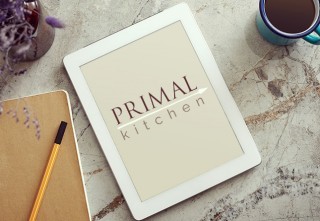 Many of us who follow a Primal lifestyle do so from a central motivation: to live the best life possible. That means eating and living in ways that amplify enjoyment and minimize work, pain, sacrifice, and suffering. When it comes to food, that translates into convenience, great taste, and using only the highest quality, nutritious ingredients possible. With some practice and prep, anyone can get the rudiments of good taste and nutrition dialed in. Heck, we have an entire recipes section on this blog dedicated to the pursuit. But sometimes, it’s just easier to have someone else do the work for us. Sometimes, we want someone else to dice those veggies, sear that grass-fed beef, marinate those veggies, and serve it to us in a way that makes our mouths water and eyes bulge in aesthetic appreciation. And sometimes, we just don’t want to do the dishes.
Many of us who follow a Primal lifestyle do so from a central motivation: to live the best life possible. That means eating and living in ways that amplify enjoyment and minimize work, pain, sacrifice, and suffering. When it comes to food, that translates into convenience, great taste, and using only the highest quality, nutritious ingredients possible. With some practice and prep, anyone can get the rudiments of good taste and nutrition dialed in. Heck, we have an entire recipes section on this blog dedicated to the pursuit. But sometimes, it’s just easier to have someone else do the work for us. Sometimes, we want someone else to dice those veggies, sear that grass-fed beef, marinate those veggies, and serve it to us in a way that makes our mouths water and eyes bulge in aesthetic appreciation. And sometimes, we just don’t want to do the dishes.
That’s why many of you have been clamoring for a restaurant that aligns with your quest for convenience. A restaurant that has total dedication to taste and the highest quality ingredients. A place where you can grab a quick bite and never have to scratch your head about whether what you’re eating is actually a ticking time bomb of unsavory food-like substitutes. And that’s why last year I announced my plans to launch a restaurant franchise that upholds those values: Primal Kitchen Restaurants.
In the past year, I’ve worked with Mario Altiery, president of Upside Group Franchise Consulting, to bring this vision to fruition. Mario, a food industry veteran and accomplished chef, has launched many successful restaurant franchises. Over the years, he’s developed a system for creating successful restaurants and other businesses that scale to the franchise level. He knows how franchises succeed and how they fail. And guess what? He’s a paleo/primal enthusiast as well! So by combining his expertise with mine, we’ve made some big things happen.
So I’m excited to share some major updates with you today.
First…
I’m pleased to announce that come fall, three Primal Kitchen Restaurants locations will be opening their doors to the public in the following locations!
Anchorage, Alaska
South Bend, Indiana
Los Angeles, California
So if you live anywhere near one of the three cities above, you’ll be one of the first to try what Primal Kitchen Restaurants has to offer.
But don’t fret if you’re not local to any of these locations. They mark the first step in a series of steps to bringing a fast-casual atmosphere serving great food to the public all across the nation. In fact, besides these three openings, we have four other locations currently in development. And that means four more cities slated to access this exceptional way of eating. It’s my goal to grow Primal Kitchen Restaurants’ reach far and wide. With your help, I think we can do it.
Here’s What Primal Kitchen Restaurants Is All About
Each meal is based on nutrient-dense vegetables, selected fruits, animals, fish, nuts, seeds, tubers, herbs, spices, and fats, while excluding a few common culprits—like grains, refined sugar, seed oils, excess carbs—that don’t add to the pure and gratifying experience of having a delicious, nutrient dense mouthful in every bite. This is a restaurant for all people, tastes, and walks of life, because it commits to nourishing your body and your palate without compromise.
I hope you’re as excited as I am when it comes to grabbing a meal at one of our new locations. But I know there are a number of foodies out there who would be interested in taking things to the next level. I’m talking about passionate individuals driven to expand this kind of food accessibility to everyone. People who have business in their blood and who are looking to change their lives and the lives of others.
And that brings me to my next announcement.
Learn How to Become a Primal Kitchen Restaurant Franchisee
If you’re willing, able, and dedicated, you can become a part of a restaurant franchise group committed to the food values that always end in a win-win situation: exceptional taste and nourishment by using only the highest quality ingredients.
Everything fresh. Nothing suspect. No compromises.
You won’t be winning over customers by exploiting food addiction. Instead, you’ll be tapping into our innate cravings for nutrient-dense essentials: we’re talking plants and animals, folks. The stuff of life and pure gastronomic pleasure.
You won’t be putting food on the table meant to be gobbled up in a moment and forgotten. You’ll be creating dishes truly worth your chewing time and effort. Food worth savoring.
You won’t be serving soft drinks, deep fried amalgamations, processed, hormone-ridden meats and industrially processed oils. Instead, you’ll give people what they truly want: delicious food that exceeds their expectations.
And you won’t be doing it for a price that excludes the majority of the public. You’ll be democratizing quality food at an affordable price, so people won’t have to choose between good food and the weight of their wallets.
Essentially, if you’re looking for a way to turn your love of Primal into a career and a business, then this could be for you.
Because if you have an entrepreneurial dream and believe in the Primal message—that we owe it to ourselves, our health, and our gene expression to eat in accordance with our biology—there might not be a better match.
If all of this applies to you, then you’ll want to sign up for a Primal Kitchen Restaurants informational webinar on September 8th, 11-12pm PDT.
In it, you’ll learn the essentials behind how you might be a potential contributor in this exciting new venture.
Click here to submit your information and a Primal Kitchen Restaurants staff member will reach out to you with further details if you’re a match.
And even if this opportunity isn’t for you, if you have a friend who’s always dreamed of opening a place where people can get food that’s as delicious as it is nourishing, pass this blog post along. It might be the perfect fit.
And, of course, even if you’re not running the place, I can’t wait to have you in one of our locations for many meals to come.
What do you think about all this restaurant business, folks? You can probably tell I’m excited. Let me know your thoughts in the comments below. Take care.
Like This Blog Post? Subscribe to the Mark's Daily Apple Newsletter and Get 10 eBooks and More Delivered to Your Inbox for FREE



August 15, 2016
Are You Suffering from Thyroid Dysfunction? Here’s How a Primal Lifestyle Can Help
 Today’s guest post is written by Elle Russ, host of The Primal Blueprint Podcast and author of Primal Blueprint Publishing’s newest upcoming title, The Paleo Thyroid Solution, which is available on Amazon.com. To learn more about Elle, you can visit her website
, ElleRuss.com.
Elle is not a medical doctor. Her story and advice below are not intended to diagnose, prevent, treat or cure thyroid issues, but instead to serve as a point of discussion between you and your doctor.
Today’s guest post is written by Elle Russ, host of The Primal Blueprint Podcast and author of Primal Blueprint Publishing’s newest upcoming title, The Paleo Thyroid Solution, which is available on Amazon.com. To learn more about Elle, you can visit her website
, ElleRuss.com.
Elle is not a medical doctor. Her story and advice below are not intended to diagnose, prevent, treat or cure thyroid issues, but instead to serve as a point of discussion between you and your doctor.
Chances are, you or someone you know has suffered from some kind of thyroid dysfunction.
There is a big discrepancy among experts’ estimates of how many thyroid patients exist in the United States. But the common assessment seems to be about 20 million Americans, while some groups estimate 27 million—with 13 million of them undiagnosed. Roughly 200 million people worldwide have some form of thyroid disease, and 60% of those with thyroid disease are undiagnosed and unaware of their condition.
Hypothyroidism, an underactive thyroid disorder and the main subject of The Paleo Thyroid Solution, is disproportionately a woman’s disease. It’s chronically misdiagnosed; doctors often mistake the symptoms of hypothyroidism as symptoms of other conditions, without factoring thyroid dysfunction as a potential cause of those symptoms. Instead, the patient is given a prescription for the misdiagnosed condition (such as high blood pressure or depression)—and the patient remains hypothyroid and continues to deteriorate. Even when properly diagnosed, hypothyroidism is often treated with the wrong combination and/or wrong dosage levels of thyroid hormones along with the widespread unavailability of proper nutritional coaching. Both the absence of treatment and the widespread practice of mistreatment results in unnecessary suffering while creating a platform of disease within the body that eventually leads to other life-threatening conditions, such as diabetes/metabolic syndrome, high blood pressure, depression, miscarriages, infertility, a variety of gynecological disorders, inflammation-related diseases, cancers, and more.
Twice in ten years, I struggled with hypothyroidism—I was slowly dying. I saw and corresponded with over fifty doctors during these two bouts, and no one knew how to help me either time. The reason all of those doctors failed to diagnose me is that they all ordered the same, incorrect blood tests, which is a widespread problem. I could feel my brain and body deteriorating rapidly, and I had developed a variety of other health problems caused by hypothyroidism and the low metabolic rate that goes hand in hand with it. It was frightening to say the least. If my thyroid condition continued to go unresolved longer than it had, I can only imagine the countless medical atrocities that would have ensued. I had already been misdiagnosed with another disease (PCOS, or Polycystic Ovarian Syndrome); I developed a uterine fibroid and a uterine polyp (which later had to be surgically removed); and I had alarmingly low hormone and nutrient levels of all kinds. What else was in store for me? How many more health disasters would I have experienced before I met an extremely premature demise? How many more years of my life would be wasted on this disease? These are the thoughts that motivated me to write The Paleo Thyroid Solution: so I could help save others from the grim reality of undiagnosed and mistreated hypothyroidism.
Ultimately, I took my health into my own hands—and without the assistance of doctors or medical professionals, I solved both bouts of hypothyroidism on my own (one bout was a Reverse T3 problem which is an ever-increasing problem in people who have not had a history of thyroid issues, as well as a growing problem for people on thyroid hormone replacement).
What’s So Important About the Thyroid Gland?
For one, you can’t live without it. Well, technically you can live without the actual gland, but you must give your body what the missing thyroid gland once gave you: thyroid hormones. The reason you cannot stay alive without a thyroid gland—or, more importantly, adequate levels of thyroid hormones—is that the thyroid is the master gland of the human body. The thyroid gland controls the metabolic rate of every organ in the body, from the production and regulation of sex hormones, adrenal hormones, body temperature, growth development, brain function, and heart rate, to every other element that keeps your body functioning. Inadequate or suboptimal levels of thyroid hormones in the human body will ultimately contribute to a miserable existence, likely rampant with diseases and health problems.
What Can You Do to Optimize Your Thyroid Function?
Adopting a paleo/primal lifestyle positively affects everyone’s fat-burning thyroid hormone metabolism more than any other way of eating and more than any other lifestyle strategy. This applies to people who currently don’t have thyroid issues and to people who take thyroid hormone replacement.
Here are four processes of fat-burning metabolism that apply to everyone (people taking thyroid hormone replacement and for people who have no thyroid issues):
The thyroid gland outputs T4 and T3
(or you take thyroid hormone replacement)
Your body converts the T4 into the active, fat-burning T3 hormone
The T3 arrives at work (the cells)
The T3 “punches in” to work (enters/affects the cells)
Why Is T3 So Important?
There is really only one thyroid hormone that we know for a fact is critical to life, and that hormone is called T3 (triiodothyronine). T3 is extremely powerful and is responsible for fat burning, brain function, body temperature, healthy heart rate, healthy blood pressure, physical energy, and more. T3 is energy. Having adequate levels of T3 contributes to lean muscle mass and calorie burning. T3 is what keeps your body temperature at an average of 98.6°F in healthy humans. And if you don’t have enough of it, that can lead to a whole host of hypothyroid problems.
Hypothyroidism Symptoms
I had all but three or four symptoms on this brutally long list. Many hypothyroid symptoms are not visible to others, and oftentimes doctors and family members/friends think these symptoms are in one’s head, somehow fabricated by hypochondriacal tendencies. These symptoms are not only real, they are rampant in people suffering from undiagnosed or mistreated hypothyroidism.
Cold hands/feet and generally being cold regardless of the weather
Insidious weight gain
Inability to lose weight no matter what you do
Weak arms
Low energy and stamina
Serious depression or general malaise
Needing a nap every day
Constipation
Sluggish reflexes or clumsiness
Dry cracked skin on heels, ankles, and elsewhere
Hair feels like straw or like a rubber band when touched or pulled
Hair loss or loss of curliness in curly or wavy hair
Inability to focus and concentrate
Mixing up words in speech (sort of like dyslexia of the mouth) and difficulty finding/remembering words
Lower/deeper voice or scratchy/raspy voice
Brain fog and forgetfulness
Menstrual irregularities such as heavy bleeding, constant bleeding, uterine fibroids/polyps, polycystic ovary syndrome (PCOS), miserable and long-lasting PMS.
Fibrocystic breasts (also an indication of estrogen dominance)
Infertility and miscarriages
Weak, brittle, cracking, breaking, splitting fingernails
Achy muscles and overall soreness
Blood pressure issues (high or too low)
Itchy inner ears (It’s like trying to scratch an itch that you cannot reach, even with a cotton swab. This one drove me nuts!)
Heavy legs when walking (feels like you are walking with cement legs)
Unhealthy/concerning cholesterol results
Low body temperature
Uncomfortable feeling in the throat/neck area
Digestive problems (gas, abdominal bloating)
Problems at work or the inability to function well at work
Relationship issues with family/friends, romantic partners, etc.
Increased or uncontrollable cravings for sugar and carbohydrates
Allergies (rare allergies are often related to untreated or mistreated Hashimoto’s)
Messy handwriting (Issues with brain-hand-muscle dexterity)
Heart palpitations (Often related to adrenals and/or low iron.)
Restless legs (Often related to low iron.)
Compromised immunity (Getting colds and/or flus more often)
Extended recovery needed after exercise and sore after exercise
Sensitivity to light, sounds, and smells (Often related to adrenals.)
Low or zero sex drive
Moody, sensitive, easily agitated, and feeling overwhelmed by simple everyday tasks
Swelling and inflammation
Puffy eyes and face upon waking – overall puffiness and bloat
Myxedema (Swelling of the skin and underlying tissues is typical of patients with underactive thyroid glands. Discoverable by visual assessment and not being able to pinch a miniscule bit of skin on the outside of your arms, near your shoulders. Instead one is only able to pinch a thick, large portion of skin.)
A growing “tire” of fat around your waist (thyroid and adrenal related)
Headaches
Constant thirst and water won’t quench it
Feeling as if something wrong is happening to your brain, as if you are getting “dumb” and losing your cognitive abilities
Anxiety attacks
How to Get Help and More Information
The Paleo Thyroid Solution dispels outdated, conventional thyroid wisdom still practiced by uninformed doctors, and provides the in-depth guidance necessary to solve hypothyroidism, achieve vibrant health, and optimize thyroid fat-burning hormone metabolism. It contains the only lifestyle and weight loss plan specifically targeted for maximizing thyroid hormone metabolism in harmony with paleo/primal/ancestral health principles.
In The Paleo Thyroid Solution, you will learn:
Paleo protocols for naturally preventing and reversing low thyroid function
The correct blood tests to diagnose hypothyroidism and how to interpret results
How to optimally treat hypothyroidism with thyroid hormone replacement
How to have a doctor diagnose and treat Reverse T3 issues (including T3-only treatment)
How to find a good doctor or help educate your current doctor
How to lose the insidious fat and weight gained from hypothyroidism
An MD’s perspective on why and how doctors are uninformed and still practicing outdated thyroid protocols (in-depth commentary from integrative physician Dr. Gary E. Foresman, MD)
You can order a copy of The Paleo Thyroid Solution here.
If you or someone you know is suffering from thyroid issues, just know that there is hope, and don’t believe any doctor who tells you that your symptoms are permanent or something you’ll just “have to deal with” throughout your life. It is my mission to help thyroid sufferers get on the right path to wellness and transform from being fat, foggy, and fatigued to FIT, FOCUSED, and FULL OF LIFE!
Elle Russ
Like This Blog Post? Subscribe to the Mark's Daily Apple Newsletter and Get 10 eBooks and More Delivered to Your Inbox for FREE



August 14, 2016
Weekend Link Love – Edition 413
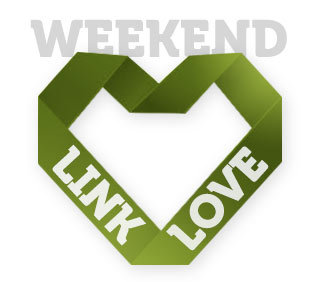 Research of the Week
Research of the WeekTake a deep breath and relax (but only if someone tells you to).
Exposure to nature can reduce aggressive behavior and negative emotions in prison inmates.
How much water you drink affects the color of your pee, says science.
Americans are still fatter than they were 20 years ago.
A mutation that made us immune to toxins in smoke might have given us the edge over neanderthals.
Sneezing and itchy eyes might mean new brain cells.
Speaking of brains, being overweight might make yours age prematurely.
What you eat may affect teeth crowding.
The first folks to settle in North America took a different route to get there than some might have thought.
New Primal Blueprint Podcasts

Episode 130: Cara Haun: Host Elle Russ chats with longtime friend, Cara Haun, about her journey recovering from severe hypothyroidism and undiagnosed Hashimoto’s disease. After years of debilitating symptoms and dead ends, Cara finally found the fixes that put her on the right track, which included a modified T3/T4 treatment and a Primal lifestyle.
Each week, select Mark’s Daily Apple blog posts are prepared as Primal Blueprint Podcasts. Need to catch up on reading, but don’t have the time? Prefer to listen to articles while on the go? Check out the new blog post podcasts below, and subscribe to the Primal Blueprint Podcast here so you never miss an episode.
Primal Performance: How to Stay Cool Under Pressure
The Primal Competitive Instinct: What Is It Good for?
Interesting Blog Posts
Chris Henshaw, an elite CrossFit coach, sees the benefits to building your aerobic base.
Primal Health Coach Tammi Gordon, aka The Diva Cavewoman, sits down to talk about her struggle weight loss, diabetes, and sleep deprivation.
One man’s diary of his therapeutic use of psilocybin.
Media, Schmedia
Controversy in the world of mayo.
Get in touch with your inner animal to extinguish anxiety.
Sounds like a pretty good party.
More meat and dairy means better nutrition for Zambians.
Everything Else
Katy Bowman, famous biomechanist and author of Don’t Just Sit There, stands up and moves for a chat.
Check out the chronicles of a self-proclaimed “sound hunter” as he makes his way through London.
Pick up a book. You may live longer.
In the name of marine conservation, the Discovery Channel might want to start playing lullabies during Shark Week.
Rhino. It’s what’s for dinner.
Now that Soylent has coffee in it, there’s really no need to consume anything else, right?
Pick another hobby.
Recipe Corner
Dense, delicious take on a classic treat: Paleo Banana Nut Muffins.
It may be hot, but it’s tomato season, folks: Tomato Basil Soup.
Time Capsule
One year ago (Aug 14 – Aug 20)
What Screen Time Does to Our Kids (and What We Can Do About It) – Even if you’re not a kid or have one, you can still learn from this.
7 Childhood Activities that Can Make You Healthier and Happier – Pick up a coloring book, why don’t you? You’ll thank me for it.
Comment of the Week
“I’m curious how you handle pressure”
I pause, take a deep breath, visualize the worst case scenario … then proceed to panic …
You had to ask.
August 13, 2016
Cajun Salmon Burgers
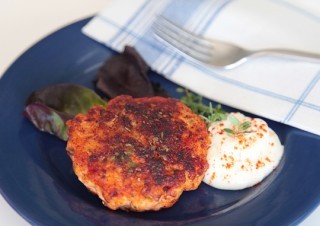 A blend of Cajun spices coat these salmon burgers, adding gentle heat to the flavorful, crispy blackened crust. These are pure salmon—no eggs, breadcrumbs or other fillers are needed to hold the juicy burgers together.
A blend of Cajun spices coat these salmon burgers, adding gentle heat to the flavorful, crispy blackened crust. These are pure salmon—no eggs, breadcrumbs or other fillers are needed to hold the juicy burgers together.
When looking for a new way to prepare salmon, don’t forget about burgers. Salmon burgers don’t take much longer to make than a salmon fillet, especially since the cooking time for burgers is only about 5 minutes. Served over salad greens with your favorite dressing, or a dollop of mayonnaise on the side, salmon burgers are a tasty way to get your omega-3s.
Servings: 4 burgers
Time in the Kitchen: 25 minutes
Ingredients

1 pound boneless, skinless salmon cut into 1-inch/25 mm cubes (453 g)
2 green onions, thinly sliced
¾ teaspoon salt (3.75 ml)
2 teaspoons smoked paprika (10 ml)
1/4 teaspoon garlic powder (1.25 ml)
1/4 teaspoon onion powder (1.25 ml)
1/4 teaspoon black pepper (1.25 ml)
¼ teaspoon cayenne pepper (1.25 ml)
2 teaspoons fresh thyme (10 ml)
1/2 teaspoon dried oregano (2.5 ml)
2 – 3 tablespoons of PRIMAL KITCHEN™ Avocado Oil
Dollop of PRIMAL KITCHEN™ Mayo
Instructions
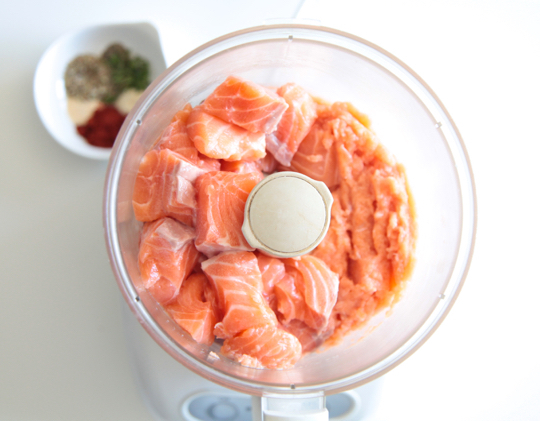
Place 1/4 of the salmon pieces in the food processor and blend into a smooth paste. Add the rest of the salmon, the green onions and salt. Pulse several times until the salmon pieces are about 1/4-inch/6 mm in size. Be careful not to over-process the mixture, the texture should remain a little chunky. If the texture becomes too smooth, the salmon won’t hold together into burger patties.
Shape the salmon into 4 patties.
In a small bowl, mix together the smoked paprika, garlic powder, onion powder, black pepper, cayenne, thyme and oregano.
Sprinkle the spice mix over each side of each burger, patting gently with your fingers so the spices stick to the salmon.
Heat a few tablespoons of oil in a non-stick skillet over medium-high heat. Cook 2 minutes per side, then lower the heat and add a lid for 1 minute more until there is no raw, dark pink salmon in the middle. The burgers can also be grilled, just make sure the grates are clean and well oiled so the burgers don’t stick.
Serve Cajun salmon burgers with a dollop of mayonnaise. You can use a side of original PRIMAL KITCHEN™ Mayo, or mix it with lime juice and/or smoked paprika.
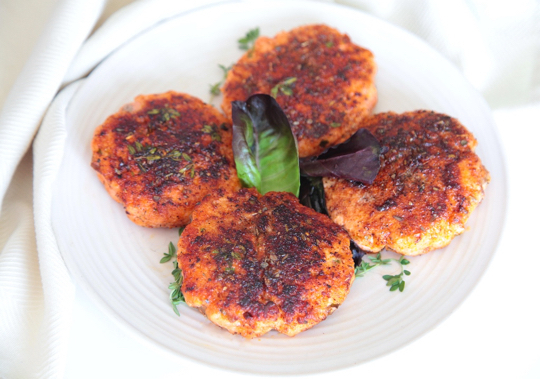
Like This Blog Post? Subscribe to the Mark's Daily Apple Newsletter and Get 10 eBooks and More Delivered to Your Inbox for FREE



August 12, 2016
Blood Sugar Normalized and Plenty of Energy: If I Can Do This, Anyone Can
It’s Friday, everyone! And that means another Primal Blueprint Real Life Story from a Mark’s Daily Apple reader. If you have your own success story and would like to share it with me and the Mark’s Daily Apple community please contact me here. I’ll continue to publish these each Friday as long as they keep coming in. Thank you for reading!
 I have been an avid reader for about three years now.
I have been an avid reader for about three years now.
I have struggled with my weight since I was about 13 years old. I suppose drinking six to twelve cokes a day didn’t help. My heaviest known weight was 240 pounds. Most big people don’t go looking for a scale. I know I was that big because that was when I was diagnosed as a Type II Diabetic. Of course, even that didn’t stop the coke habit because I was in denial. It took several more years of losing 30 pounds, and then finding it again, to get really serious. Even then, the path is never a straight line.
Three years ago July, I found an online nutrition coaching program—Precision Nutrition, a year long habit based program. At the same time, my wife told me that an ex-colleague of ours, who at 50 was in fantastic shape, was doing CrossFit and Paleo. I had never heard of either one. When I Googled Paleo I found Mark’s website.
Even doing the year long coaching program, I still wasn’t where I wanted to be with my health. While I did remove all processed foods, especially Coke, I still was about 190 pounds. I am 5’10”. I have done lots of reading and research. I learned about leptin from Dr. Jack Kruse. I started to understand how chronic inflammation due to insulin resistance was the root cause of my problems. I also found Dr. Jason Fung—a huge advocate of fasting. While I had lots of information, putting it into practice is always the hard part.
On February 7 of this year, I had elbow surgery for a repetitive motion injury from 25+ years of IT work. I knew that Naproxin wreaked havoc on my system, but post surgery you need something to get you through. Eight weeks ago I had a physical. My A1c was 6.6, which is high for me. I was up to 197 pounds and was not happy about it. I decided to do a n=1 experiment where I would utilize fasting and real food. I decided to have coffee in the morning and eat one meal a day for eight weeks. I am now down to 175. My blood glucose has normalized. I am in ketosis and feel great. I have plenty of energy to take on whatever sounds good.
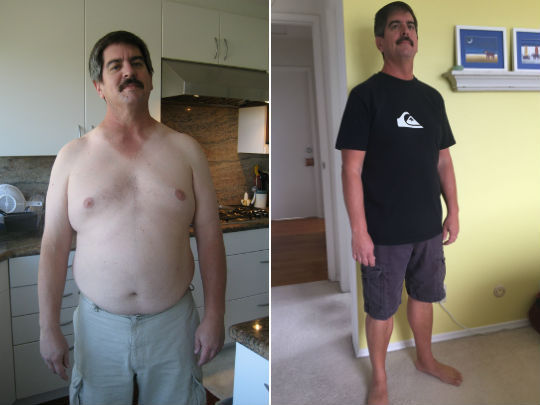
I move a lot at a slow pace. A year ago I got a Varidesk and ditched my chair. I have been standing while working for a year now. If I can do this—anyone can. I also signed up for the Primal Health Coach Program the first day it was available. I am proud top say I am number 93.
Thanks for everything you have done for me,
Rick
Like This Blog Post? Subscribe to the Mark's Daily Apple Newsletter and Get 10 eBooks and More Delivered to Your Inbox for FREE
Save



August 11, 2016
Primal Performance: How to Stay Cool Under Pressure
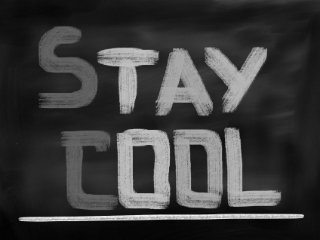 Think for a minute about how many times you felt pressure today—pressure to do something you were nervous to do, pressure to perform in the moment, pressure to make the right choice, pressure to take a big step toward a change or experience you want in your life? What was it like? I find pressure to be an intriguing concept. It certainly feels stressful, but it’s ultimately more than stress. Whereas stress at its core is really just a state of physical and/or emotional strain (generally in response to what we somehow perceive as challenging circumstances), it’s initially a response versus a force (but can become a force when chronic). As a result, stress is most essentially a reaction we can at times avoid or use any range of strategies to minimize or manage. Pressure, on the other hand, is more of an input, a force not just acting in us but on us, influencing and compelling us toward action, much like the concept in physics. The pressure we experience may come from outside expectations or from internal sources (e.g. perfectionism), but the net effect is the same: in one way or another, we’re called to act.
Think for a minute about how many times you felt pressure today—pressure to do something you were nervous to do, pressure to perform in the moment, pressure to make the right choice, pressure to take a big step toward a change or experience you want in your life? What was it like? I find pressure to be an intriguing concept. It certainly feels stressful, but it’s ultimately more than stress. Whereas stress at its core is really just a state of physical and/or emotional strain (generally in response to what we somehow perceive as challenging circumstances), it’s initially a response versus a force (but can become a force when chronic). As a result, stress is most essentially a reaction we can at times avoid or use any range of strategies to minimize or manage. Pressure, on the other hand, is more of an input, a force not just acting in us but on us, influencing and compelling us toward action, much like the concept in physics. The pressure we experience may come from outside expectations or from internal sources (e.g. perfectionism), but the net effect is the same: in one way or another, we’re called to act.
Let me say it a different way. When it comes to stress, the most pressing issue is how we take care of it. When we’re talking about pressure, however, the question is how we will meet it.
Let’s look at some Grok-style Primal examples, shall we?
In response to a circling predator, Grok is pressured to attack or run. Upon seeing that the band’s main water source has dried up as a result of diminished rains, Grok and his group experience pressure to find a new source in the area or to relocate for a time. In response to an aggressive neighboring band, there’s pressure to actively take up the conflict or to carefully negotiate by some means. When a competing suitor challenges him, he feels pressure to either fight or back down. Our good man here undoubtedly feels stress resulting from all of these scenarios, but the pressure itself is to act in some regard. In each case he’s called upon to move, react or perform, and the instinctual stress response works to this advantage—prepares him physically for the output of extraordinary strength or effort, readies his body to address injury or trauma, focuses his senses and thinking for clear-headedness. The stress response is inextricable from facing these survivalist pressures and gives him an advantage.
Our challenges these days undeniably vary from most of Grok’s to degree if not in nature.
Today we’re more likely to experience “performance pressure” in the form of giving a speech or presentation at work, participating in a competition, mastering a skill to perform on demand, making an important financial or professional decision, handling a conflict in our family life or social circles, etc.
But the substance doesn’t matter as much as the structure here. The same overall Primal pattern still holds in these modern “make it or break it” moments. We experience these and other daily or near daily pressures that induce stress and call us to take action. In the face of these pressures we can perceive and even be totally overwhelmed by a natural fight or flight instinct, and yet with practice we can learn to harness that instinct to our advantage.
There’s the saying “grace under pressure,” grace in this context meaning the refinement of movement. Yes, movement. Our power in meeting pressures is how we choose to interact with them. If we accept pressure as a force, we can learn to move with it (rather than cover our heads and be emotionally overtaken and rendered helpless). It’s a similar principle as those you find in martial arts—the observation of and interaction with a force that flows between you and your opponent.
In the original primal times, cool heads not only prevailed, but survived. And that’s what we’re going for here. If Grok seized up when a predator approached and lost himself to inward anxiety, he’d literally be dead meat. Choking wasn’t an option in the Darwinian circus.
So, what was the alternative; the survivalist option? In short, to keenly observe the challenge (in this case, the predator), to move how it moved and to anticipate its likely choices in a given moment with the intent of an appropriate reaction that would foil its attack. Fight or flight at its most successful had a coolheaded strategy—and good timing.
When we want to remain coolheaded in the less insidious challenges of modern life, we can view our circumstances in a similar way—as a game of observation and response.
Identify your challenger
As you stare down a decidedly non-Primal buffet at a work luncheon, realize that it’s not the actual food that’s the challenger but the onset of cravings or the will to sabotage. When you’re nervous about giving a presentation, discern the challenger not as the speech itself but the out-of-body inner critic that critiques you as you talk. In navigating an argument with a loved one, understand the challenger isn’t the person him/herself but first and foremost a disconnect in communication. Personifying the challenge as challenger shifts it to a dynamic force you can work with rather than a solid, stationary mental object you can’t move, let alone move with.
Envision distance between you and the challenger
Keeping in mind how you’ve correctly identified the real challenger, now picture yourself distanced from it. As far removed as you need to imagine yourself. Give yourself space to observe. The farther you get from it, the smaller it will seem. Again, you’re not taking yourself physically out of the situation (although sometimes that’s a good strategy when stress gets overwhelming). You’re simply learning a discipline of skillful observation. No one can observe anything that’s on top of them or that feels like it’s entangled in their emotional fabric.
Separate yourself in order to put yourself in rational relationship to the challenger. In an argument, visualize the disconnect in communication (and the emotion that results from it) as a separate entity. Imagine what it would look like from 20, 30 feet (or more) away. The sabotaging cravings are now on the other side of the room rather than in your own head. The fear of failure as you begin that first 5K is now on the sidelines behind the fire hydrant. Be with the visualization as long as you need. Carry it with you. And work with a mindfulness practice to sharpen this skill every day.
“Move but don’t move the way fear makes you move”
This is a quote from the Sufi poet, Rumi, but I find it a potent truth that applies to nearly every decision or challenge in health and life if you look at it from the right angle. Now that you’ve distanced yourself from the challenger of a particular situation and given yourself room to think beyond the range of the reptilian brain (what’s generally activated under pressure), you’re ready to act from strategy rather than fear.
When you act from strategy, you’re acting from a place of decision as opposed to reaction. You have options for what will drive the bus so to speak. There’s space to imagine the commonplace advice like “keep an even keel,” “fake it ’til you make it,” “go in confident,” etc. But there’s also no need for pretense when you’re not identifying anymore with emotional strain.
Squarely ask yourself, “How would fear move in this situation,” fear generally being the “cheapest room in the house” (in the words of yet another poet). There’s no need to go write a thesis about it. With practice, you’ll get your answer pretty swiftly. Fear would decide on presentation day that I’d go home sick. Or, if I did show up and do the presentation, I’d focus on myself and my feelings for the entire miserable hour. Fear would believe that I’m not capable of selecting a few mostly Primal options during the buffet luncheon and that I might as well surrender to my reptilian desires. Fear would have me say anything in an argument to protect my fragile ego. Fear would tell me not to expect much from myself in my workout or 5K race.
But what would a non-fear response look like? (It’s easier to identify once you put fear in a corner.) Resist getting too ambitious by calling it the “brave” choice or the “smart” choice or the “confident” choice. Just go for a non-fear choice. Period.
A non-fear choice in an argument accepts that your ego isn’t on the line. In fact, it can sit down and simply listen. It can decide not to decide anything for the moment but to listen now and wait until clarity comes at another time. A non-fear choice can see the possibilities in a buffet or, if need be, can summon the self-attunement to excuse yourself from the event while you find something that will fit the Primal bill and carry you to your next meal. A non-fear choice doesn’t squander energy on self-defeating thoughts while you try a new section of the gym or decide this time to walk around the whole lake for the first time. A non-fear choice decides that it doesn’t matter how well you perform at today’s company softball game and let’s go of assessment because critique doesn’t do anything but disrupt the flow (not to mention the fun).
Discerning your non-fear options in the face of pressure helps to untangle choice from cortisol. It recognizes the Primal fight or flight stress response but removes it from the decision-making process. You might still feel the heightened energy, but you’re leaning into it now instead of pulling away from it. The difference, especially with practice, can become a whole new level of Primal power.
Thanks for reading today, everyone. I’m curious how you handle pressure and especially how you apply principles of strategy and mindfulness in more challenging situations. Share your thoughts, and have a great end to your week.
Like This Blog Post? Subscribe to the Mark's Daily Apple Newsletter and Get 10 eBooks and More Delivered to Your Inbox for FREE



It’s That Time Again: We Need More Primal Kitchen Brand Ambassadors!
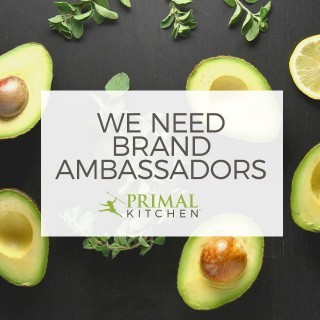 Calling all Primal Kitchen enthusiasts! Do you love our products? Does the idea of educating others on the benefits of wholesome, healthy, delicious ingredients pique your interest? Looking for some fun, flexible, part-time work? Then today is your lucky day! We’re expanding our Brand Ambassador team in Denver, Los Angeles, Minneapolis, and New York.
Calling all Primal Kitchen enthusiasts! Do you love our products? Does the idea of educating others on the benefits of wholesome, healthy, delicious ingredients pique your interest? Looking for some fun, flexible, part-time work? Then today is your lucky day! We’re expanding our Brand Ambassador team in Denver, Los Angeles, Minneapolis, and New York.
If you (or someone you know) meet the requirements from the list below, and you’re looking for work with lots of control over your schedule, please apply by filling out the application and emailing your resume to brittany.young@primalkitchen.com. Go over our Brand Ambassador checklist and see if you’re a match. If you are, then you might be snagging a killer position in one of these cities!
Requirements:
You love hanging out in Whole Foods or your local natural grocery store
You have an outgoing personality and you’re incredibly charming and fun
You live a Primal lifestyle
You have a general understanding of why avocado oil is the best oil—and you’re not afraid to educate shoppers
You like to talk
You have wheels
You live in Denver, Los Angeles, Minneapolis, and New York.
You have a smartphone (for recording information from your demo)
If you think you’d make a good fit, apply here!




August 10, 2016
7 Habits of Highly Successful Primal Endurance Athletes
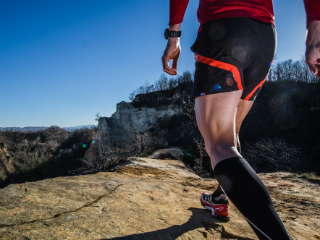 Things have been busy for the Primal Endurance movement since I released the book back in December. People have been eager to learn more about this novel form of training, so we’ve been answering a lot of questions. Much like how The Primal Blueprint received a lot of attention because it bucked against Conventional Wisdom, such has been the case for Primal Endurance. Lots of head scratching, balking, but then, after learning the science and seeing the results, a healthy curiosity or full blown conversion. So what’s Primal Endurance training all about? What are the fundamentals? Who’s practicing it? And where can you learn more about it?
Things have been busy for the Primal Endurance movement since I released the book back in December. People have been eager to learn more about this novel form of training, so we’ve been answering a lot of questions. Much like how The Primal Blueprint received a lot of attention because it bucked against Conventional Wisdom, such has been the case for Primal Endurance. Lots of head scratching, balking, but then, after learning the science and seeing the results, a healthy curiosity or full blown conversion. So what’s Primal Endurance training all about? What are the fundamentals? Who’s practicing it? And where can you learn more about it?
To get the message out as wide as possible, in the wake of the book we created a dedicated Primal Endurance podcast to gather an assortment of captivating guests to talk all things endurance-related. If you’ve tuned in, you’ve probably heard Brad’s series of shows detailing each of the book’s chapters. The book has been very well received and we’ve already commissioned a second printing after selling out the first print run. So why the buzz? I think there are a couple things at play.
First, the endurance community as a whole is waking up to the exciting and scientifically validated concept that a high fat diet might offer performance and health advantages over the traditional high carbohydrate diet.
Part of this shift results largely from work done by the heroic Dr. Timothy Noakes, Ph.D. in South Africa, one of the world’s leading endurance exercise physiologists and author of the epic Lore of Running (944 pages of all you need to know about the physiology of endurance running). A lifelong runner and leading proponent of the carbohydrate/glycogen burning paradigm as it relates to endurance performance, Noakes has bravely second-guessed his life’s work in recent years, prompted by being diagnosed as pre-diabetic despite careful attention to a healthy per-conventional-wisdom grain-based diet and serious lifelong commitment to distance running. He’s taken a bunch of heat from resistant folks stuck in the carbohydrate paradigm, but is making great progress toward evolving the perspective in the scientific community. The South African public is now embracing what Noakes calls the Banting Diet (after a guy in the 1862 who went low-carb and lost weight). You can listen to my talk with him here.
The amazing athletes profiled in our book are also making great progress in shifting the dated philosophy about carbohydrate paradigm endurance training.
A few notable people include:
Ultrarunning legend Timothy Olson (listen to his episode on the podcast here).
National champion 100k man and prolific blogger Zach Bitter (who burns fat at a higher rate than any athlete ever tested, nearly double the limit of what was previously thought humanly possible before Dr. Jeff Volek’s vaunted FASTER Study).
World age group champion triathlete Sami Inkinen (who showed with precise laboratory data that he could improve his “time to bonk” from 5.6 hours to 87 hours in a few short months of primal-aligned eating).
And prominent primal/paleo physician and self-experimenter Dr. Peter Attia, whose scientific insight is paving the way for change.
Second, people are really resonating with my and Brad’s personal story.
As many readers know, Brad and I hail from the endurance sports scene—it’s where we first connected 28 years ago, when I became Brad’s coach during his career on the pro circuit. While assorted endurance training fads have come and gone over the years, certain themes have held steady. Unfortunately, an overly-stressful, overly-regimented chronic approach to training is one of them. Even though Brad and I have been out of the game for a long time, we’ve been stewing on the sidelines, exasperated at how little progress has been made over time with the hot button items like chronic training patterns, overly stressful heart rate zones, recurring illness and injury as routine instead of unusual, high burnout rates, elevated disease risks (including many of our former peers on the racing scene suffering from serious cardiovascular events in later years; here’s my sobering post about it), and finally, excess body fat concerns among endurance athletes despite their many hours of training.
Nearly three years ago now, Brad and I were lamenting the popularity of the latest craze on the endurance scene: the “hacking” of the process of building a base of endurance competency by engaging in high intensity workouts. As in, “why bother with those grueling 20-mile runs when you can do a bunch of box jumps and power home the final six miles of the marathon!” Don’t get me wrong—resistance training can indeed benefit your endurance performance, but it must be carefully integrated into a foundation of aerobic base training to prevent breakdown and burnout.
At the same time, we were seeing some elite and recreational athletes alike experiencing better health and better performance pursuing their endurance goals while honoring the ten laws of the Primal Blueprint. It seemed like a perfect time to leverage the general health and fat burning beast elements of the primal approach and present a comprehensive, revolutionary approach to endurance training that would address the flawed and dated conventional approach successfully. We worked very hard to provide a simple, easy-to-read, but powerful message about how to transform your approach to endurance training, slow down to go faster, have more fun and less stress, and last and often not least, finally lose those final five, 10, or 20 pounds of excess body fat that hang around despite your devotion to training and eating sensibly.
All that said, I want to share with you an excerpt from the book that you might enjoy called the 7 Habits of Highly Effective Endurance Athletes. It gives you a bird’s eye view of what Primal Endurance is all about. It’s a great takeaway for anyone looking to improve their training, whether you’re an endurance athlete or not. But if you want some more of the specifics, read on through the end, since I have an exciting project in the works that may interest you.
1. Sleep
Yes, sleep is number one—the next frontier of performance breakthroughs in all sports, especially endurance sports. Your athletic pursuits require you to sleep significantly more than if you weren’t training. Reject conventional wisdom’s “eight hours” recommendation and individualize your approach, honoring these two maxims: minimize artificial light and digital stimulation after dark; and awaken each morning, without an alarm, refreshed and energized. If you are training more, sleep more. If you can’t honor the aforementioned maxims, stop training until you can. If you fall short of optimal sleep one day, take a nap the following day—instead of your workout!
2. Stress/Rest Balance
Primal-style endurance training allows you to reach for higher highs (via breakthrough workouts) and observe lower lows (more rest, shorter, easier recovery workouts, and staying below aerobic maximum heart rate at the vast majority of workouts). This approach will appeal to your competitive intensity by allowing you to focus on peak performance and recovery, instead of focusing on the flawed notion of “consistency” in the context of improving fitness through training. Furthermore, realize that virtually all endurance athletes, from novice to elite, do too much training and not enough rest. Consider backing off on both your mileage and your intensity, and integrating more sleep, recovery, and complementary practices into your “training” routine.
3. Intuitive and Personalized
Your training schedule is sensible, intuitive, flexible, and even spontaneous instead of regimented and pre-ordained. Respect your daily life circumstances, motivation levels, stress levels, energy levels, immune function, and moods. This means backing off when tired, but also pursuing breakthrough workouts when you feel great! Experimentation is necessary to dial in the best approach that works for you, and entails some trial and error. Also, what worked for you last year may not work in the future, so be open to flexibility. The top priority is to enjoy your program and feel confident that it works well for you.
4. Aerobic Emphasis
Endurance success is primarily dependent on aerobic efficiency. Aerobic base building delivers by far your best return on investment, and is best achieved by strictly limiting heart rate to aerobic max or lower during defined aerobic workouts and training periods. Stay out of the black hole (sustained cardio workouts at heart rates above the “180-age” max aerobic calculation), and don’t venture into high-intensity training blocks before you have a strong base.
5. Intensity Structure
Intensity can deliver exceptional results for endurance athletes, when a strong base is present, when workouts are brief in duration and really intense, when they are conducted only when you are highly motivated and energized, and during defined periods that are short in duration and always followed by a rest period and preceded by an aerobic period.
6. Complementary practices
Increased general daily movement, spontaneous, unstructured play sessions, mobility work such as technique drills and dynamic stretching, movement practices like yoga and Pilates, and high-intensity strength training are essential for success, because we live sedentary lives of extreme physical ease. Remember, in endurance competitions, you have to “endure.” Cranking out your daily hour-long workout and then sitting at a desk, in a car, and on a couch the rest of the day is not preparing you to endure anything except perhaps a beatdown on the race course at the hands of a more all-around active human. Expand your perspective to embrace total fitness and an active, energetic lifestyle.
7. Periodization
An annual program always commences with an aerobic base period (minimum eight weeks). With success, high-intensity periods can follow—a few weeks is plenty before taking a bit of rest, a bit of aerobic base rebuilding, and then a return to a brief intensity/competition period. The annual training calendar program always ends with an extended rest/off-season period. The new calendar starts with an extended aerobic base period. This general overview offers plenty of flexibility, but you have to respect the need to engage in blocks of specific training focus as an immutable law of endurance training.
Well, there you go!
Even if you’re not a big time endurance athlete, these tips can help you navigate the challenge of balancing hectic modern life and ambitious fitness goals.
I hope you enjoyed this glimpse of the Primal Endurance philosophy.
Grab the book in print, digital, or audio format (audio listeners get the added benefit of Brad’s humorous ad-libbing) and subscribe to the podcast to go deeper.
And if you’re really interested in taking things to the next level, we are developing a comprehensive multimedia online education course to bring the Primal Endurance book to life. It’ll be there to help endurance folks more deeply understand and implement the training and lifestyle principles with the help of world-leading experts on specific topics.
I’ll keep you updated as we aspire to trend further in the direction of multimedia with Primal Blueprint Publishing.
But in the meantime, you can sign up here to stay tuned.
Thanks for reading, everyone. What’s your experience with training after going Primal? If you’ve already purchased a copy of Primal Endurance, any questions contained within I can help answer?




August 9, 2016
Big Changes Coming to Mark’s Daily Apple! What Do You Want to See? (Plus a Contest)
 It’s truly hard to believe, but this year we’re coming up on the blog’s ten year anniversary. That’s ten years of Primal tips, trends, contests, health challenges, events, and more. From a series of quick musings in the days when blogging was still the wild west, to thousands of posts and forum discussions later, Mark’s Daily Apple has come a long way since its humble beginnings. To celebrate, and to continue my life goal of helping 100 million people get healthy and live awesome, I have big plans for Mark’s Daily Apple on the very near horizon. Last year, I asked all of you for input as my team and I began the process of giving the blog a major design update. Now, after many months of hard work, we’re coming up on the final stages of getting the newly minted version of the blog ready for showtime. And we’ll be rolling it out in the weeks to come.
It’s truly hard to believe, but this year we’re coming up on the blog’s ten year anniversary. That’s ten years of Primal tips, trends, contests, health challenges, events, and more. From a series of quick musings in the days when blogging was still the wild west, to thousands of posts and forum discussions later, Mark’s Daily Apple has come a long way since its humble beginnings. To celebrate, and to continue my life goal of helping 100 million people get healthy and live awesome, I have big plans for Mark’s Daily Apple on the very near horizon. Last year, I asked all of you for input as my team and I began the process of giving the blog a major design update. Now, after many months of hard work, we’re coming up on the final stages of getting the newly minted version of the blog ready for showtime. And we’ll be rolling it out in the weeks to come.
But here’s the thing.
It all starts and ends with you, Mark’s Daily Apple readers. You continue to be my primary focus and, as always, this blog wouldn’t be what it is without you.
So today I want to know what you want out of MDA. What do you want to learn? What interests you? And since I get some form of the question often, what do you want to know about my own personal day-to-day?
Health trends and topics have evolved a lot since I first started writing this blog. What was once a fringe topic is now mainstream. What was once novel is now old news. So what do you think is new, relevant, captivating, and pressing that needs to be addressed in the Primal sphere of 2016 and beyond? How can I better serve you and the community we have built together?
I’ve covered a lot of topics, but there are plenty more to be explored.
Whether it’s the new frontier of Primal Endurance, to the burgeoning field of Primal health coaching, there are new modes, concepts and practices of Primal living that are taking a foothold. Nutrition and lifestyle science, after all, is always coming out with new information. And the modern world isn’t planning on forestalling change anytime soon.
So I want to know how I can tackle all matter of things that matter most! And to give you some incentive in exchange for your thoughts, I’ll give you a shot at winning some free stuff (because, why not?)
The Contest
“What do you want me to write about?”
My articles are constantly informed by the thoughts and ideas of my readers. Today is your chance to tell me what you’d like to see me research and write about in the foreseeable future. In the comments section below, tell me one topic you’d like to see covered, or one question you’d like to see answered, or the title of one blog post that just has to be written. I’m leaving this fairly open ended. No idea is too small or big.
A winner will be chosen at random. Agreeing with other people is allowed (and encouraged), but only the idea comments will be counted for drawing purposes.
The Prize
A PRIMAL KITCHEN™ prize package containing the following:
1 Jar of Original Mayo
1 Jar of Chipotle Lime Mayo
6-Pack of Dark Chocolate Almond Bars
1 Bottle of the new Extra Virgin Avocado Oil
1 Bottle of Honey Mustard Vinaigrette
1 Bottle of Greek Vinaigrette
The Deadline
Midnight (PDT), tonight!
Who’s Eligible
Everyone. We’ll ship this prize package anywhere in the world!
Thanks in advance to everyone that offers an idea. I’ll see what I can do to give you what you want as we unveil the newest version of Mark’s Daily Apple!




Mark Sisson's Blog
- Mark Sisson's profile
- 199 followers



